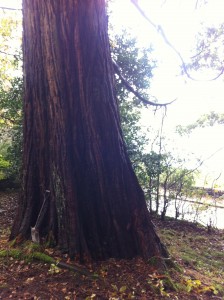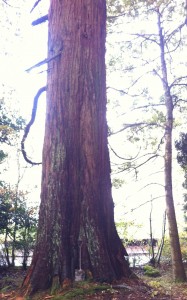
News
Giant Redwood and Honey fungus
Giant Redwoods (Sequoiadendron giganteum) are some of the tallest trees in the UK growing so far, to a lofty height of 54 metres. A tree in Perthshire has been found with a girth of 4 metres in diameter and over 12 metres in circumference in only 150 years. Very few giant redwoods have been known to blow down in storms although they are susceptible to branches breaking and splitting in the wind. These split branches are commonly known as hazard beams.
Recently i carried out a tree survey in Cumbria in the Lake District on an old victorian property which had extensive gardens. It had some beautiful trees including two large Atlantic cedars and three large giant redwoods. One with a huge girth of well over 2.5 metres, this tree had recently died and showed signs of infection by honey fungus (Armillaria mellea)
Another giant redwood showed signs of extensive decay. More than seventy five percent of the bark at the base of the tree had been killed off with one side of the tree extensively decayed into the basal roots. Surprisingly the tree had a full green crown with no sign of dieback.
On closer examination the signs of honey fungus were found around the decayed area, rhizomorphs under the bark and around the decayed wood. These are root like structures that the fungus uses to travel between trees and decayed wood in exploration of new hosts.
Trees have evolved various methods of counteracting the effects of decay. Some species can compartmentalise decay keeping it confined in a particular area of the tree. Others show an adaption response by producing reaction wood. This is wood produced in reaction to weakness in the stem which the tree can sense. Often if the tree is of high vitality and has good energy levels the new wood produced around the stem can counteract the weakened area and the tree can safely grow for many years.
The wood of giant redwoods show very little sign of being able to compartmentalise decay. This tree due to its vitality showed an adaption response caused by the decay weakening the stem, this could be seen by the asymmetrical stem shape on one side of the tree (see picture)
The honey fungus is this case killed off seventy five percent of the bark which left very little girth in which reaction wood could be produced. Trees of this size often die first as the fungus kills off the roots and sapwood.
Redwoods are magnificent trees often found in stately homes and gardens.



